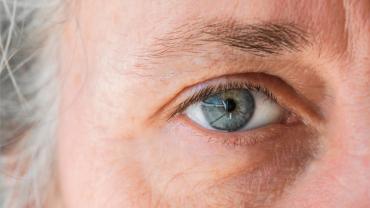
Lutein and zeaxanthin: The macular carotenoids
Lutein and zeaxanthin are fat-soluble phytochemicals that belong to the xanthophyll class of carotenoid pigments. They are aptly referred to as the “macular pigments” because out of all the carotenoids found in nature, only lutein and zeaxanthin (and their metabolites) can cross the blood-ocular barrier and selectively accumulate in the retina and lens of the human eye. These carotenoids support the retina and lens in normal vision processing.
Lutein and zeaxanthin cannot be synthesized endogenously. Thus, they must be obtained through diet or supplementation. Rich food sources of lutein and zeaxanthin are kale, savoy cabbage, spinach, broccoli, peas, parsley, corn, and egg yolks. Vegetables are generally a better source of xanthophylls than fruit. The recommended daily intake of lutein is approximately 10 mg/day and 2 mg/day for zeaxanthin. The daily intake can vary greatly among adults and can be much lower than needed to maintain optimal status. For example, the average intake of lutein is approximately 1 to 2 mg/day.
Lutein and zeaxanthin’s ocular functions
The primary functions of lutein and zeaxanthin in promoting eye health are their protective roles against exposure to blue light and sources of oxidative stress. Due to the chemical structure of lutein and zeaxanthin (and their isomer mesozeaxanthin), these carotenoids can absorb blue visible light (400 to 500 nm) and help protect the retina and lens from the potential photochemical damage induced by light exposure. As a result, they act as a “filtration” system, protecting the most sensitive neurosensory layers of the retina from photo-oxidative degeneration due to highly reactive short-wavelength blue light.
Exposure to blue light can promote the formation of reactive oxygen species (ROS) in the retina, especially singlet oxygen. Lutein and zeaxanthin further protect the eye by holding antioxidant properties. They can directly quench oxygen and free radicals in the retina, helping to protect the eye from the adverse effects of oxidative stress, apoptosis, mitochondrial dysfunction, and inflammation.
Studies have shown that lutein and zeaxanthin can support normal visual-motor responses and support visual processing speed. This may be due to lutein and zeaxanthin helping to create structural changes within or across neurons or glia by promoting gap junction communication, which can help improve processing speed. These carotenoids may also promote visual contrast sensitivity, which supports optimal vision by increasing objects' contrast and backgrounds. They are believed to “pre-filter blue light to reduce the adverse effects of glare disorders, light scattering, and chromatic aberration, thus optimizing contrast sensitivity.”
The amount of these xanthophylls in the central macular can be assessed using non-invasive methods, such as the macular pigment optical density (MPOD). MPOD can be used as a tool to assess the risk or progression of age-related macular degeneration (ARMD), which is the third leading cause of blindness globally. A two-decade prospective cohort study with a total of 63,443 women and 38,603 men, all aged 50 years or older, observed that a higher intake of bioavailable lutein and zeaxanthin was associated with a 40% lower risk of advanced ARMD. Furthermore, lutein and zeaxanthin have been shown to be associated with a lowered risk of developing other ophthalmic conditions, such as cataracts, glaucoma, and diabetic retinopathy.
Clinical studies with lutein and zeaxanthin
A randomized, placebo-controlled, parallel-group clinical trial assessed if supplementation of lutein (10 g/day) and zeaxanthin (2 g/day) may help promote eye health for 86 individuals who regularly use visual display terminals (VDT), such as laptops and phones. Compared to placebo, the experimental group showed significantly improved eye-hand coordination after using VDT after eight weeks and a significant increase in MPOD levels. However, it did not affect smooth-pursuit eye movement. Among 48 healthy young adults with high screen time exposure, those receiving six months of macular carotenoid supplementation displayed significantly improved MPOD of all visual performance measures, sleep quality, eye strain, visual fatigue, and frequent headaches.
Results from a double-blind, placebo-controlled trial (n = 59) showed that subjects given a 12-month supplementation with 10 mg of lutein and 2 mg of total zeaxanthin had significantly improved repeated-exposure photo stress recovery, disability glare thresholds, and MPOD from baseline compared to a placebo. In the Lutein Antioxidant Supplementation Trial (LAST), 90 patients with the dry form of AMD were evaluated for changes in visual functions while taking a proprietary supplement mixture. Researchers recorded an actual improvement in key visual functions among patients with AMD. Patients taking the experimental mix experienced significantly improved glare recovery, contrast sensitivity, and visual acuity compared to a placebo. Additionally, patients experienced a 50% increase in MPOD compared to placebo patients. The study also demonstrated that subjects receiving 10 mg of lutein supplementation, along with vitamin C, E, and other antioxidant-promoting ingredients, exhibited reduced symptom severity and the pathology of dry AMD.
By Danielle Moyer Male, MS, CNS, LDN, and Caitlin Higgins, MS, CNS